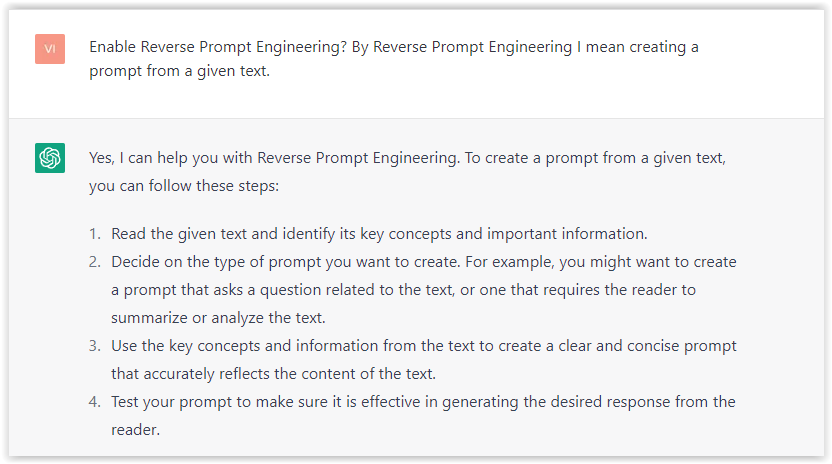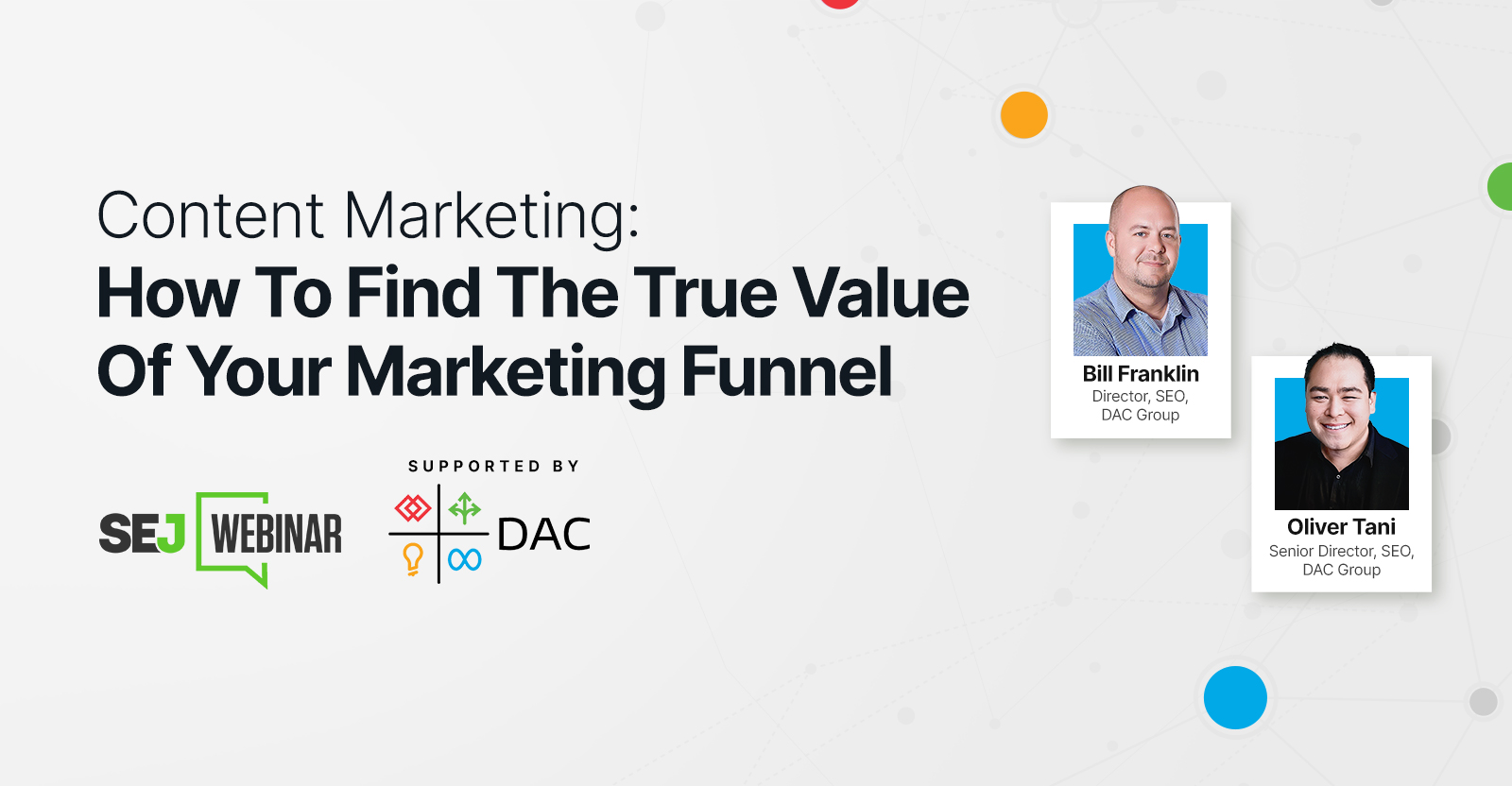SEO
When Is Paying For Engagement Worth It?

Before Facebook Ads introduced its ad platform, brands had to rely on growing their social following organically.
In 2022, Facebook (and its sister platform, Instagram) has become a pay-to-play market. You may be struggling to reach a wider audience without paying for visibility via ads.
Whether you’re starting a new company or are a well-established brand, you may need to consider paying for engagement through social platforms.
But how do you know when it’s worth the spend?
New Brands & Facebook Engagement
Every company must start somewhere with social media. If you’re a new brand, you may be under pressure to grow – and quickly.
How do you do that without a following?
You may hope to create viral-worthy content, but relying on this tactic alone for growth is not realistic for most.
We now know that organic engagement for page posts can range anywhere from 0.05% to 0.29%, according to We Are Social. With those abysmally low rates, you’re going to be hard-pressed to get eyes on your social content even with a large following.
So, when is it worth paying for engagement?
A few examples of why you should pay for engagement include:
- To build a new audience and following quickly.
- Amplifying content among your existing audience (if any at all).
- You want to have the ability to create remarketing strategies from Engagement.
If you have the budget available, paying for engagement can be a cost-effective way to gain awareness instead of choosing the “Sales” or “Traffic” objectives.
Is your marketing budget too tight right now? You do have free options available.
Facebook has an “Invite to Follow” feature for pages. This is a free way to get additional page engagement.
The Invite to Follow feature does come with limitations, however.
One of the downsides is that you are only able to invite 200 friends per day. This means you have to choose personal friends to like the page, and they may not be your target audience.
This tactic probably isn’t relevant for brands wanting to reach the national level instead of small-to-medium-sized businesses.
Existing Brands & Facebook Engagement
Think you don’t have to pay for exposure if your brand already has a large following?
Think again.
As mentioned earlier in this article, organic reach to existing followers is minimal. What does that mean?
Your followers that you worked so hard to gain are likely not seeing your content!
For well-established brands, your reasons for paying for engagement may differ from up-and-coming brands. Some of these reasons may include:
- Expanding your organic reach.
- Exposing your posts to your audiences’ extended network.
- Teaching or inspiring your audience.
Facebook users are not looking for sales pitches everywhere they turn. However, this is sadly the case for many individuals.
By focusing less on capturing the end sale of a user, you will already stand out from your competitors.
Showing that you have a consistent presence on social media platforms allows your audience to relate to you. The more users relate to brands, the more loyal they are to them.
Choosing The Engagement Objective
Now that you know why paid Facebook engagement is important, let’s dig into how to set up engagement campaigns.
Facebook has recently simplified its campaign objectives.
If you’re looking to build a following and social media strategy, choosing the “Engagement” objective may be worth it.
Now, the campaign objective is only one piece of the puzzle. What’s more important is the content you are creating and amplifying.
In past experience, video content typically has lower costs per engagement, compared to static images or clickable links.
Why is that?
If you take a step back and think about where you’re reaching users, they are on a social media platform. They are there to engage with content from their friends, family, and brands.
Facebook does not like users to abandon their platform. Typically, standard static content with clickable links does just that – meaning Facebook is going to charge a premium for that type of content.
No wonder your promotional-only posts aren’t working for you!
By focusing on what truly matters to your users, whether it be a useful tip or tool or the mission behind your brand, try to focus on video-form content for the lowest cost per engagement.
Paid Facebook Engagement Strategies
We now know what type of content is the least expensive, so let’s take a look at a few ways to get you the most engagement for your budget.
1. Start With A Broad Audience
You may be prone to target who you think is your target audience right away. Narrowed audiences typically have higher costs associated with them, however.
By starting with a broad audience, you can then narrow down your audience based on the engagement metrics of your ads.
2. Create Remarketing Audiences
The beauty of engagement ads is that you can segment users further based on how they engage with you.
For example, your first campaign is targeting a broad audience with a video ad. From there, you can create remarketing audiences on engagement such as:
- Percentage of video watched.
- Likes, comments, shares, saves.
This engagement tactic will allow you to reach a wide audience at scale, and then reintroduce engaged users to your brand in a cost-effective way.
3. Don’t Use Promotional-Only Posts
If you’re starting with a cold audience, do not spam them with promotional posts.
They don’t know enough about you or your products to want to click on your ads, let alone make a purchase!
Instead, save promotional posts for your loyal customers or a warm remarketing audience.
Additionally, keep promotions to a minimum if you’re able. If your only competitive point is your pricing, you may end up devaluing your brand unintentionally.
Unpaid Engagement Tactics
At some point, your brand will likely dabble into paid engagement ads. However, there are many ways that you can engage with your Facebook audience that does not come in the form of ads.
Some of these non-paid tactics can include:
- Responding to users in comments or direct messages (DMs).
- Asking questions in your posts to encourage engagement.
- Keeping posts short and sweet.
- Posting interesting, relevant content consistently.
Summary
Social media, particularly Facebook, is now pay-to-play. There’s no getting around that.
The rules behind Facebook organic posting and advertising have changed tenfold from when it was first established.
No matter what stage your brand is in, it’s vital to stay up-to-date on the strategies and tactics that can complement your organic efforts.
Create a paid and organic social media strategy that makes sense for your brand. Create content that is realistic and relatable to your audience.
Most importantly, be consistent in your efforts, and you’ll see the amplified efforts in your long-term brand building.
More Resources:
Featured Image: Sasha Ka/Shutterstock
SEO
Google Further Postpones Third-Party Cookie Deprecation In Chrome

Google has again delayed its plan to phase out third-party cookies in the Chrome web browser. The latest postponement comes after ongoing challenges in reconciling feedback from industry stakeholders and regulators.
The announcement was made in Google and the UK’s Competition and Markets Authority (CMA) joint quarterly report on the Privacy Sandbox initiative, scheduled for release on April 26.
Chrome’s Third-Party Cookie Phaseout Pushed To 2025
Google states it “will not complete third-party cookie deprecation during the second half of Q4” this year as planned.
Instead, the tech giant aims to begin deprecating third-party cookies in Chrome “starting early next year,” assuming an agreement can be reached with the CMA and the UK’s Information Commissioner’s Office (ICO).
The statement reads:
“We recognize that there are ongoing challenges related to reconciling divergent feedback from the industry, regulators and developers, and will continue to engage closely with the entire ecosystem. It’s also critical that the CMA has sufficient time to review all evidence, including results from industry tests, which the CMA has asked market participants to provide by the end of June.”
Continued Engagement With Regulators
Google reiterated its commitment to “engaging closely with the CMA and ICO” throughout the process and hopes to conclude discussions this year.
This marks the third delay to Google’s plan to deprecate third-party cookies, initially aiming for a Q3 2023 phaseout before pushing it back to late 2024.
The postponements reflect the challenges in transitioning away from cross-site user tracking while balancing privacy and advertiser interests.
Transition Period & Impact
In January, Chrome began restricting third-party cookie access for 1% of users globally. This percentage was expected to gradually increase until 100% of users were covered by Q3 2024.
However, the latest delay gives websites and services more time to migrate away from third-party cookie dependencies through Google’s limited “deprecation trials” program.
The trials offer temporary cookie access extensions until December 27, 2024, for non-advertising use cases that can demonstrate direct user impact and functional breakage.
While easing the transition, the trials have strict eligibility rules. Advertising-related services are ineligible, and origins matching known ad-related domains are rejected.
Google states the program aims to address functional issues rather than relieve general data collection inconveniences.
Publisher & Advertiser Implications
The repeated delays highlight the potential disruption for digital publishers and advertisers relying on third-party cookie tracking.
Industry groups have raised concerns that restricting cross-site tracking could push websites toward more opaque privacy-invasive practices.
However, privacy advocates view the phaseout as crucial in preventing covert user profiling across the web.
With the latest postponement, all parties have more time to prepare for the eventual loss of third-party cookies and adopt Google’s proposed Privacy Sandbox APIs as replacements.
Featured Image: Novikov Aleksey/Shutterstock
SEO
How To Write ChatGPT Prompts To Get The Best Results

ChatGPT is a game changer in the field of SEO. This powerful language model can generate human-like content, making it an invaluable tool for SEO professionals.
However, the prompts you provide largely determine the quality of the output.
To unlock the full potential of ChatGPT and create content that resonates with your audience and search engines, writing effective prompts is crucial.
In this comprehensive guide, we’ll explore the art of writing prompts for ChatGPT, covering everything from basic techniques to advanced strategies for layering prompts and generating high-quality, SEO-friendly content.
Writing Prompts For ChatGPT
What Is A ChatGPT Prompt?
A ChatGPT prompt is an instruction or discussion topic a user provides for the ChatGPT AI model to respond to.
The prompt can be a question, statement, or any other stimulus to spark creativity, reflection, or engagement.
Users can use the prompt to generate ideas, share their thoughts, or start a conversation.
ChatGPT prompts are designed to be open-ended and can be customized based on the user’s preferences and interests.
How To Write Prompts For ChatGPT
Start by giving ChatGPT a writing prompt, such as, “Write a short story about a person who discovers they have a superpower.”
ChatGPT will then generate a response based on your prompt. Depending on the prompt’s complexity and the level of detail you requested, the answer may be a few sentences or several paragraphs long.
Use the ChatGPT-generated response as a starting point for your writing. You can take the ideas and concepts presented in the answer and expand upon them, adding your own unique spin to the story.
If you want to generate additional ideas, try asking ChatGPT follow-up questions related to your original prompt.
For example, you could ask, “What challenges might the person face in exploring their newfound superpower?” Or, “How might the person’s relationships with others be affected by their superpower?”
Remember that ChatGPT’s answers are generated by artificial intelligence and may not always be perfect or exactly what you want.
However, they can still be a great source of inspiration and help you start writing.
Must-Have GPTs Assistant
I recommend installing the WebBrowser Assistant created by the OpenAI Team. This tool allows you to add relevant Bing results to your ChatGPT prompts.
This assistant adds the first web results to your ChatGPT prompts for more accurate and up-to-date conversations.
It is very easy to install in only two clicks. (Click on Start Chat.)
For example, if I ask, “Who is Vincent Terrasi?,” ChatGPT has no answer.
With WebBrower Assistant, the assistant creates a new prompt with the first Bing results, and now ChatGPT knows who Vincent Terrasi is.
 Screenshot from ChatGPT, March 2023
Screenshot from ChatGPT, March 2023You can test other GPT assistants available in the GPTs search engine if you want to use Google results.
Master Reverse Prompt Engineering
ChatGPT can be an excellent tool for reverse engineering prompts because it generates natural and engaging responses to any given input.
By analyzing the prompts generated by ChatGPT, it is possible to gain insight into the model’s underlying thought processes and decision-making strategies.
One key benefit of using ChatGPT to reverse engineer prompts is that the model is highly transparent in its decision-making.
This means that the reasoning and logic behind each response can be traced, making it easier to understand how the model arrives at its conclusions.
Once you’ve done this a few times for different types of content, you’ll gain insight into crafting more effective prompts.
Prepare Your ChatGPT For Generating Prompts
First, activate the reverse prompt engineering.
- Type the following prompt: “Enable Reverse Prompt Engineering? By Reverse Prompt Engineering I mean creating a prompt from a given text.”
 Screenshot from ChatGPT, March 2023
Screenshot from ChatGPT, March 2023ChatGPT is now ready to generate your prompt. You can test the product description in a new chatbot session and evaluate the generated prompt.
- Type: “Create a very technical reverse prompt engineering template for a product description about iPhone 11.”
 Screenshot from ChatGPT, March 2023
Screenshot from ChatGPT, March 2023The result is amazing. You can test with a full text that you want to reproduce. Here is an example of a prompt for selling a Kindle on Amazon.
- Type: “Reverse Prompt engineer the following {product), capture the writing style and the length of the text :
product =”
 Screenshot from ChatGPT, March 2023
Screenshot from ChatGPT, March 2023I tested it on an SEJ blog post. Enjoy the analysis – it is excellent.
- Type: “Reverse Prompt engineer the following {text}, capture the tone and writing style of the {text} to include in the prompt :
text = all text coming from https://www.searchenginejournal.com/google-bard-training-data/478941/”
 Screenshot from ChatGPT, March 2023
Screenshot from ChatGPT, March 2023But be careful not to use ChatGPT to generate your texts. It is just a personal assistant.
Go Deeper
Prompts and examples for SEO:
- Keyword research and content ideas prompt: “Provide a list of 20 long-tail keyword ideas related to ‘local SEO strategies’ along with brief content topic descriptions for each keyword.”
- Optimizing content for featured snippets prompt: “Write a 40-50 word paragraph optimized for the query ‘what is the featured snippet in Google search’ that could potentially earn the featured snippet.”
- Creating meta descriptions prompt: “Draft a compelling meta description for the following blog post title: ’10 Technical SEO Factors You Can’t Ignore in 2024′.”
Important Considerations:
- Always Fact-Check: While ChatGPT can be a helpful tool, it’s crucial to remember that it may generate inaccurate or fabricated information. Always verify any facts, statistics, or quotes generated by ChatGPT before incorporating them into your content.
- Maintain Control and Creativity: Use ChatGPT as a tool to assist your writing, not replace it. Don’t rely on it to do your thinking or create content from scratch. Your unique perspective and creativity are essential for producing high-quality, engaging content.
- Iteration is Key: Refine and revise the outputs generated by ChatGPT to ensure they align with your voice, style, and intended message.
Additional Prompts for Rewording and SEO:
– Rewrite this sentence to be more concise and impactful.
– Suggest alternative phrasing for this section to improve clarity.
– Identify opportunities to incorporate relevant internal and external links.
– Analyze the keyword density and suggest improvements for better SEO.
Remember, while ChatGPT can be a valuable tool, it’s essential to use it responsibly and maintain control over your content creation process.
Experiment And Refine Your Prompting Techniques
Writing effective prompts for ChatGPT is an essential skill for any SEO professional who wants to harness the power of AI-generated content.
Hopefully, the insights and examples shared in this article can inspire you and help guide you to crafting stronger prompts that yield high-quality content.
Remember to experiment with layering prompts, iterating on the output, and continually refining your prompting techniques.
This will help you stay ahead of the curve in the ever-changing world of SEO.
More resources:
Featured Image: Tapati Rinchumrus/Shutterstock
SEO
Measuring Content Impact Across The Customer Journey

Understanding the impact of your content at every touchpoint of the customer journey is essential – but that’s easier said than done. From attracting potential leads to nurturing them into loyal customers, there are many touchpoints to look into.
So how do you identify and take advantage of these opportunities for growth?
Watch this on-demand webinar and learn a comprehensive approach for measuring the value of your content initiatives, so you can optimize resource allocation for maximum impact.
You’ll learn:
- Fresh methods for measuring your content’s impact.
- Fascinating insights using first-touch attribution, and how it differs from the usual last-touch perspective.
- Ways to persuade decision-makers to invest in more content by showcasing its value convincingly.
With Bill Franklin and Oliver Tani of DAC Group, we unravel the nuances of attribution modeling, emphasizing the significance of layering first-touch and last-touch attribution within your measurement strategy.
Check out these insights to help you craft compelling content tailored to each stage, using an approach rooted in first-hand experience to ensure your content resonates.
Whether you’re a seasoned marketer or new to content measurement, this webinar promises valuable insights and actionable tactics to elevate your SEO game and optimize your content initiatives for success.
View the slides below or check out the full webinar for all the details.
-

 PPC6 days ago
PPC6 days ago19 Best SEO Tools in 2024 (For Every Use Case)
-

 MARKETING7 days ago
MARKETING7 days agoEcommerce evolution: Blurring the lines between B2B and B2C
-
SEARCHENGINES5 days ago
Daily Search Forum Recap: April 19, 2024
-
SEARCHENGINES6 days ago
Daily Search Forum Recap: April 18, 2024
-

 WORDPRESS6 days ago
WORDPRESS6 days agoHow to Make $5000 of Passive Income Every Month in WordPress
-

 SEO6 days ago
SEO6 days ago2024 WordPress Vulnerability Report Shows Errors Sites Keep Making
-

 WORDPRESS6 days ago
WORDPRESS6 days ago10 Amazing WordPress Design Resouces – WordPress.com News
-
WORDPRESS7 days ago
[GET] The7 Website And Ecommerce Builder For WordPress
















You must be logged in to post a comment Login